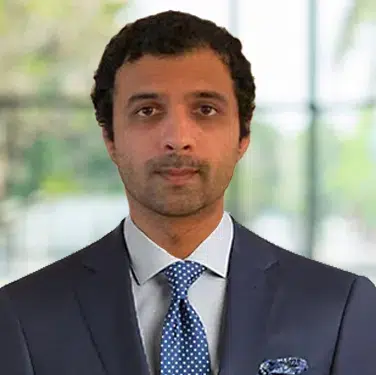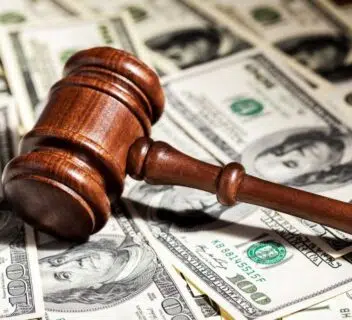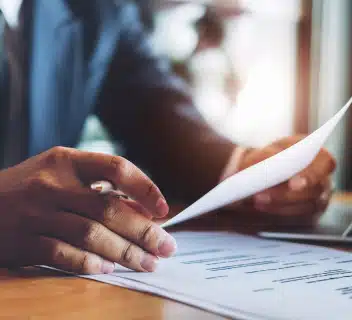How Leaving the Scene of an Accident Impacts an Injury Lawsuit
If you’ve been injured in a hit and run (in other words, if the other driver flees the scene of the accident before you can get their information), then you might be entitled to compensation — but a hit and run makes obtaining compensation a bit more complicated.
It’s not always easy to determine the identify of the vehicle involved, or the driver involved. You might not have caught the full license number or plate number of the fleeing driver, for example.
But don’t worry!
With the aid of a skilled attorney-investigator and police, you may be able to dive into the evidence/footage and piece together the information you need to pursue the defendant.
That being said, there are a number of unique issues surrounding hit and runs. Let’s take a closer look.
Why do people flee the scene of an accident?
People flee the scene of an accident for a variety of reasons:
- Lack of a driver’s license
- Expired driver’s license
- Improper driver’s license type (i.e., do not have a commercial license and they’re operating a large delivery truck)
- They caused more damage than they anticipated (property damage, severe injury, etc.), and are afraid of the consequences
- Their motor vehicle is stolen
- Their vehicle does not actually belong to them — perhaps they were borrowing a family member or friend’s vehicle
- They do not have adequate insurance coverage
- They do not have insurance coverage at all
- They have an extensive crash record and are concerned about an uptick in insurance fees if they get caught again
- And more
Leaving the Scene of an Accident Qualifies as a Hit and Run
In most jurisdictions of the United States, a person is required to stay at the scene of an accident if there is property damage or the accident resulted in an injury.
Failure to stay at the scene of the accident until law enforcement agents arrive is a violation known as a “hit and run,” and could lead to serious civil penalties and criminal penalties.
Being Injured by a Hit and Run Driver Could Impact Your Lawsuit in Several Ways
There are a number of different ways that hit and run accidents differ strategically from accidents where the defendant-driver doesn’t leave, or even stops to render aid. The strategic impact of a “hit and run” can be both positive and negative.
Positive Impacts
- If you can obtain the hit and run driver’s identity, then the fact that they “fled” the scene of the accident makes a court less likely to believe their narratives
- Juries tend to be more supportive of the injury victim in hit and run accidents
- Bonus punitive damages may be available depending on how severe the accident was — fleeing the scene of a severe accident when an injury victim needs help may be egregious enough behavior for a court to award punitive damages
Negative Impacts
- The hit and run driver might successfully “get away” without leaving any possible trace or clue as to their identity, thus preventing any lawsuit against them for damages recovery — you’d then have to explore suing alternative defendants for a partial recovery
- Even if you do identify a hit and run defendant, they may have fled because they don’t have insurance coverage. That means that it’s not strategically valuable to sue them, especially if you have substantial losses. Again, you’d have to explore suing alternative defendants with deeper pockets
Alternative Strategies for Recovery in a Hit and Run
Suppose that the fleeing driver does actually “get away” and you and your defense attorney can’t identify them. There’s no footage, no trail left behind — nothing. Do you have other options for recovery?
In many cases, yes.
When you’re left with a dead-end as far as pursuing a claim against the insurance company or driver of the other vehicle, then you will want to more deeply explore other potentially liable parties who you can sue to secure at least a portion of the compensation owed.
These parties or other party may include:
- The City (who may have improperly designed or maintained the roadway, leading to the auto accident)
- The auto manufacturer (who may have developed a defective vehicle or part that contributed to the accident, whether it was the victim’s vehicle or yours that was defective)
- Other drivers (whose negligent, reckless, or intentional misconduct might have contributed to the accident — for example, a third driver may have recklessly pushed the defendant-driver into your lane, forcing a collision)
- Treating medical professionals (who may have engaged in medical malpractice, thus exacerbating your condition)
- And more
Worth noting is that in most states you can submit a claim with your own insurer (through your uninsured motorist coverage policy, if you have it) that may allow you to receive a benefits payout in the event of a hit and run accident.
Why shouldn’t a driver leave the scene of a car accident if no one is injured?
A driver who prematurely leaves the scene of an accident — even if there is no injured person — is not acting reasonably, as “injuries” are not always obvious.
In many cases, the apparent extent of a physical injury is hidden or doesn’t reveal itself until advanced diagnostic tests have been conducted. The adrenaline of a traffic collision can also hide the pain of a serious injury in the hours after the accident.
So instead of leaving the scene of an accident, the driver should provide law enforcement agency with their information (contact info, insurance info, etc.), make sure that law enforcement agents have arrived and have been given adequate information with which to file a police report, and — once everything is adequately handled — may leave.
Steps to take after a car accident
After a car accident, there are a number of steps that you should take to preserve your claims and maximize the likelihood of compensation. These steps are by no means exhaustive, but should include the following:
- Secure emergency medical attention, if necessary. Waiting too long to be seen by a medical professional can be used against you when you bring your lawsuit, as the defendant will likely claim that your injuries worsened due to your delay. Even if you think you haven’t suffered an injury, it’s important to see a medical professional to confirm — some injuries aren’t obvious on the surface.
- Take pictures and video of the accident scene, if possible. Assuming that you don’t have an immediate, emergency medical need, it may be worth taking pictures and videos of the accident scene to use as evidence later. These will help experts reconstruct the accident, and will help support your narrative of how the accident actually occurred.
- Avoid speaking to insurers or defendants at-length without an attorney. Anything you say can be used to undermine your claims. For example, if you reveal to an insurance adjuster you were mentally exhausted at the time of the accident, they may take your words and misinterpret them against you — they’ll argue that you were so exhausted that you shouldn’t have been driving, and in fact, that the accident was your fault (at least partially). They will then use this to reject your claim or underpay you. Attorneys are skilled and experienced in handling the challenges of communication with insurers and others. Consult an attorney before getting into any important discussions with third-parties.
- Obtain the contact info of any eyewitnesses before they leave. Eyewitness testimony is critical for supporting your claims, as consistent, favorable eyewitness testimony can counter the defendant’s incorrect factual narrative.
- Get in touch with a law enforcement officer if one has not arrived. Law enforcement officers will file a police report, which will prove useful as a factual reference point for your lawsuit.
- Consult an attorney, even if you are still at the scene of an accident. Attorneys are comprehensive advocates who will support you throughout the entire litigation process — and that includes the initial phase, right after you’ve gotten into an accident. They will communicate with third parties on your behalf, protect your rights, gather evidence, and identify potential strategic opportunities early. Contact an attorney as soon as possible to maximize your chance of success.
Contact 1-800-THE-LAW2 for a Free Legal Consultation
If you’ve been injured in a car accident under circumstances where the other person involved fled the accident scene, then you could be entitled to significant damages as compensation — and given that the case is a hit-and-run accident involving you, it could potentially be easier to establish liability.
That being said, though disputes involving motor vehicles may seem straightforward, they are often more complicated than they initially appear. That’s why it’s so crucial to consult with an experienced personal injury attorney for guidance on how best to proceed.
Contact 1-800-THE-LAW2 to speak to a personal injury attorney in our legal network in just ten minutes or less. They’ll be able to offer you a free initial consultation, during which you’ll have the opportunity to discuss your motor vehicle accident case in more detail. If you decide against moving forward, that’s okay! You’re under no obligation to continue. So call in to get started.
We look forward to assisting you.




